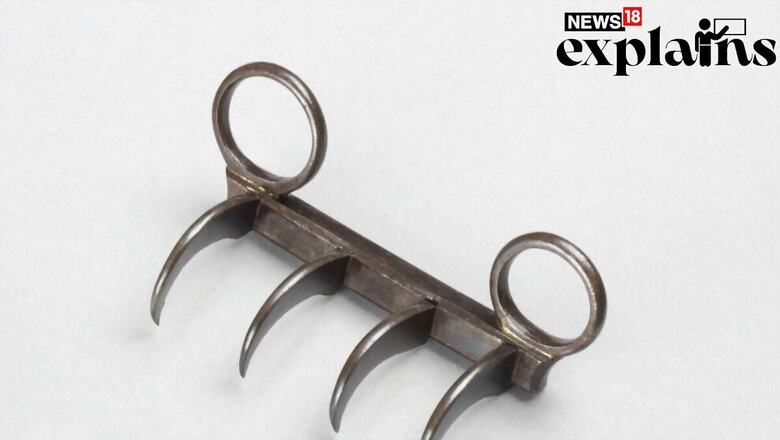
views
An iconic tiger claw or ‘wagh nakh’ that belonged to Maratha empire’s patriarch Shivaji Bhosale I or Chhatrapati Shivaji Maharaj is set to return home in Maharashtra centuries after Shivaji is said to have fought a consequential war with the weapon.
The wagh nakh will return to India for the first time next week after the East India Company took it to England in the 1820s during the British colonial conquest on Indian subcontinent.
Loan for Three Years
The tiger claw is scheduled to return to Maharashtra from London in November this year, coinciding with Maharashtra’s 350th anniversary celebrations of the coronation of Chhatrapati Shivaji.
The iconic weapon is currently in London’s Victoria and Albert Museum. The claw will be brought from the museum “on loan” for a three-year exhibition in South Mumbai.
Maharashtra Culture Minister Sudhir Mungantiwar will travel to London on Tuesday to formalise an agreement with the museum for the repatriation of this historic weapon.
According to reports, the wagh nakh will find its home at the Chhatrapati Shivaji Maharaj Museum in South Mumbai.
Significance of ‘Wagh Nakh’
As per historical accounts, Shivaji and Afzal Khan had arranged a truce after political upheavals in order to meet in a tented enclosure, virtually alone. The V and A description of the history of the ‘Tiger Claws’ explains: Both came armed: Shivaji wore mail under his clothes and metal skull protection under his turban. He also held a metal Tiger Claws’ weapon concealed in his hand. The two men fought, and Shivaji disembowelled his opponent.
Whereas, other reports say that in the Battle of Pratapgarh in 1659, the ‘wagh nakh’ was used by Shivaji Maharaj to kill Bijapur Sultanate’s general Afzal Khan– the commander of the opposing Bijapur army. Despite being outnumbered, the Marathas’ victory enhanced Chhatrapati Shivaji’s reputation as a brilliant military strategist.
The last Peshwa (Prime Minister) of the Marathas, Baji Rao II, surrendered to the British in June 1818 after defeat in the Third Anglo-Maratha War and was banished to Bithoor near Kanpur. It is possible he also surrendered this weapon to Grant Duff. It has not been possible to verify whether these tiger claws are the ones used by Shivaji nearly 160 years earlier.
Shivaji’s act of killing Afzal Khan at the foot of Pratapgarh fort in present-day Satara has become a popular episode, symbolising his courage in defeating a powerful adversary.
How it Landed with the British
According to historians, the wagh nakh was kept in the sanctum sanctorum of a temple housed within Satara ruler’s family residence.
It is believed, though unverified, that the set of claws then came into the possession of James Grant Duff, an officer of the East India Company who was appointed Resident or political agent of the Satara state in 1818 and gifted to the Victoria and Albert (V and A) by a descendant.
“This Relic was given to Mr. James Grant-Duff of Eden When he was Resident at Satara By the Prime Minister of the Peshwa of the Marathas,” the museum website stated.
According to the V and A, the weapon is accompanied by a fitted case made after Grant Duff returned to Scotland. The inscription on the case reads: The ‘Wagnuck’ of Sivajee With Which He Killed the Moghul General. This Relic was given to Mr. James Grant-Duff of Eden When he was Resident at Satara Minister of the Peshwa of the Marathas”.
(With inputs from agencies)
















Comments
0 comment